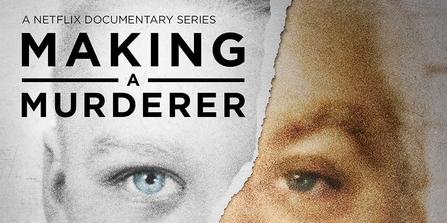Making a Murderer began streaming on Netflix in December 2015 and has had viewers in an uproar since its premiere. Filmed over the course of 10 years, this documentary-based series follows the 2007 court case of Steven Avery and examines injustices in the court system.
Avery’s court case is especially compelling considering that he was wrongfully placed in prison for 18 years. In 1985, he was accused and convicted of raping a local woman, although there was not sufficient evidence to prove him guilty. Avery’s local police force had a personal vendetta against him and the series implies that is the reason Avery originally ended up in prison.
To compensate for the 18 years lost of his life while locked away, Avery filed a $36 million lawsuit against Manitowoc County in Wisconsin.
Before a consensus was made on this lawsuit, another investigation of Avery had opened—this time accusing him of murdering an innocent woman who was last seen alive at his house.
Making a Murderer is ideal for binge watching with 10 individual hour-long installments. This series follows the specific details of Avery’s murder case and inspects crucial evidence that seemed to be overlooked by the jury.
The point-of-view of this series is subjective in support of Avery’s innocence. After many straight hours of viewing, it seemed so obvious Avery was clearly innocent and framed by his local police force for the second time in his life. In that sense, this documentary was extremely successful in persuading the audience to be in support of Avery.
However, like any documentary, it is important to recognize that key details were overlooked in an effort to paint an innocent picture of Avery. It is easy to believe that after watching 10 hours-worth of compelling court footage that all key facts are presented, but it is important to remember that the footage for this documentary was collected over a 10-year period — so it would be impossible to include everything.
Regardless of whether Avery murdered the woman or not, this series is successful in exposing clear injustices of local government. This theme alone is a large part of the series controversy that has viewers so passionate for justice in this case.
Since Making a Murderer’s premiere, filmmakers have begun preparing a follow-up series with additional evidence in support of Avery. A juror from the case will also go on record stating she believes Avery is innocent and was framed by the Manitowoc County Police Department.
A petition to the Obama administration in an effort to pardon Avery’s sentencing was published on Dec. 20, 2015 and has already grossed 129,950 total signatures.
In response to the petition, the Obama administration published an official response that says “the President cannot pardon a state criminal offense.”
Time will only tell if Avery remains in prison for life or is let out again under false charges. When Netflix releases a second season of Making a Murderer, I think it will have the same sensational impact, intensity and allure.




